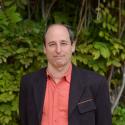Reading the Rocks has a provocative subtitle, “How Victorian Geologists Discovered the Secret of Life”, indicating the role of geology in paving the way to an understanding of the evolution of our planet as a changing physical entity that was to eventually support ever-evolving forms of life: but this is not so much revealtion of a secret, more a history. In a series of short pithy chapters, we are treated to a fascinating cast of characters who invented a new subject, both academic and practical, with enthusiasm and almost overwhelming energy, embracing those on the other side of the Channel (notably France, especially at the end of the Napoleonic wars), not to mention the New World across the Atlantic, and finally involving the British Empire.
The biographer (and journalist) Brenda Maddox is no stranger to unusual narratives. Earlier subjects included the first substantial study of Nora, James Joyce’s wife, subsequently the basis for a film, and Rosalind Franklin, the dark lady of DNA, who is now properly prominent in the narratives of that life-changing discovery. Her literary biographies have encompassed Yeats, DH Lawrence and George Eliot, who was herself passionately interested in the new science of geology. And in a personal introduction to this accessible narrative, she tells us that taking Geology 1 at Harvard (also known as “rocks for jocks”) led to a life-long enthusiasm and an entrée to scientific journalism.
 It is a complex multi-layered story, handled with aplomb, which brings the rocky surfaces of earth into proper perspective. The painful challenges of these investigations were of course to the chronologies of creation embodied in religion. Just over a century and a half ago a sequence of earth-shattering discoveries began to unfold that proved hitherto unimaginable threats to received opinion.
It is a complex multi-layered story, handled with aplomb, which brings the rocky surfaces of earth into proper perspective. The painful challenges of these investigations were of course to the chronologies of creation embodied in religion. Just over a century and a half ago a sequence of earth-shattering discoveries began to unfold that proved hitherto unimaginable threats to received opinion.
The 19th century, of course, was the great era of the amateur (gentleman) scientist, who turned our apprehension of the world upside down. In geology it was the barrister turned scientific sleuth Charles Lyell, with his Principles of Geology, an 1830 bestseller which told its audience that the planet was almost unimaginably old. He was to become almost a soulmate with Charles Darwin, who was also, before he was absorbed by biology, a student of geology, and whose own theories of evolution could hardly have happened without that foundation.
In Britain, it was the spectacular scenery of Scotland that offered geologists visible evidence of the stratification of rocks; different rocks containing similar fossils indicated enormous land and sea upheavals. Siccar Point was perhaps the most dramatic and legible formation, observed and analysed by the 18th century Scottish physician, naturalist and farmer James Hutton. His observations, albeit not as readable as those of Lyell, and therefore not as popular, were a foundation for what came after.
Moreover, the pursuit of geology in the natural world appealed to those whose health needed care: it was an outdoor activity, characterised by “fresh air and regular exercise”. Adam Sedgwick was one such, coming to geology almost inadvertently when elected to a Cambridge chair: “Hitherto I have never turned a stone; henceforth I will leave no stone unturned.” Darwin, as a Cambridge undergraduate, was to study geology under Sedgwick.
In addition, geology required little expensive equipment, and could prove of huge economic import in indicating mineral riches. Academic clergymen also took it up, perhaps originally to refute the findings, then with that kind of compromise which often makes the world go round, to indicate that the story of Genesis was not so much literal as a poetic metaphor.
We are reminded, too, of perhaps the greatest lesson of all: the permanence of change
Vivid characters include the hard-drinking Reverend William Buckland, an early and effective publicist (in modern terms) for the relatively new and evolving science. Among his many acquaintances and collaborators was the remarkable Mary Anning, the “geological celebrity” of Lyme Regis, situated on the Jurassic Coast and the richest repository of fossils in Britain. She brings into even clearer focus the obsessive tenacity, both physical and intellectual, that distinguishes the early geologists. Working between tides she discovered fossil remains and dinosaur skeletons – ichthyosaur, pterosaur and plesiosaur – selling her finds to collectors and other scientists, although she never published her work. The daughter of a cabinet-maker, who collected fossils to display, and sell in the cabinets he made, she was the exception that proved the rule: most of the geologists discussed here were male, academics, clergymen and gentlemen with incomes from other sources than geology. But Anning was a mini-entrepreneur, needed the money she made from the sale of her finds to collectors, and was eventually provided with grants from learned societies.
Doctors were among the professionals who became obsessed with geology, using their knowledge of bones and anatomy in general, among them the Sussex-based Gideon Mantell, and his rival Richard Owen, who invented the name dinosaur, and was to found the Natural History Museum. Another luminary whose reach extended across the Empire was the military man Roderick Murchison whose pursuit of the outdoor life of hunting and shooting he thought could be combined with geology: an early biographer suggested that “great work could be done by a man with a quick eye, a good judgment, a clear notion of what has already been accomplished, and a stout pair of legs”. Geology’s early days were clubbable, with various learned societies encouraging both collaboration and rivalry.
Systemising, labelling and, finally, narrating were the great tools of the field. Contradictions abounded: the Swiss American Louis Agassiz evolved the notion of the Ice Ages, finding that glaciers were probably the great agent of moving rocks from one stratum to another, yet he remained a creationist. Maddox’s absorbing history shows us many of the idiosyncratic individuals and beliefs that contributed to a creative fervour of investigation. We are brought up to date with a brief exposition of the main current theories of tectonic plates leading to the movements of continents. We are reminded, too, of perhaps the greatest lesson of all: the permanence of change.
- Reading the Rocks by Brenda Maddox (Bloomsbury, £20)
- More book reviews on theartsdesk















Add comment